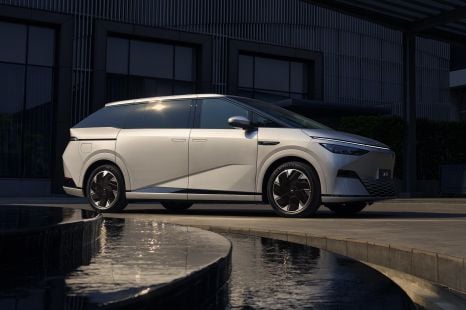

William Stopford
Will 2026 be the year of the people mover in Australia? China seems to think so
1 Hour Ago
Kia has massaged its flagship for 2021. With a revised look, punchy engine, and comfortable cabin, it's still an excellent highway cruiser.
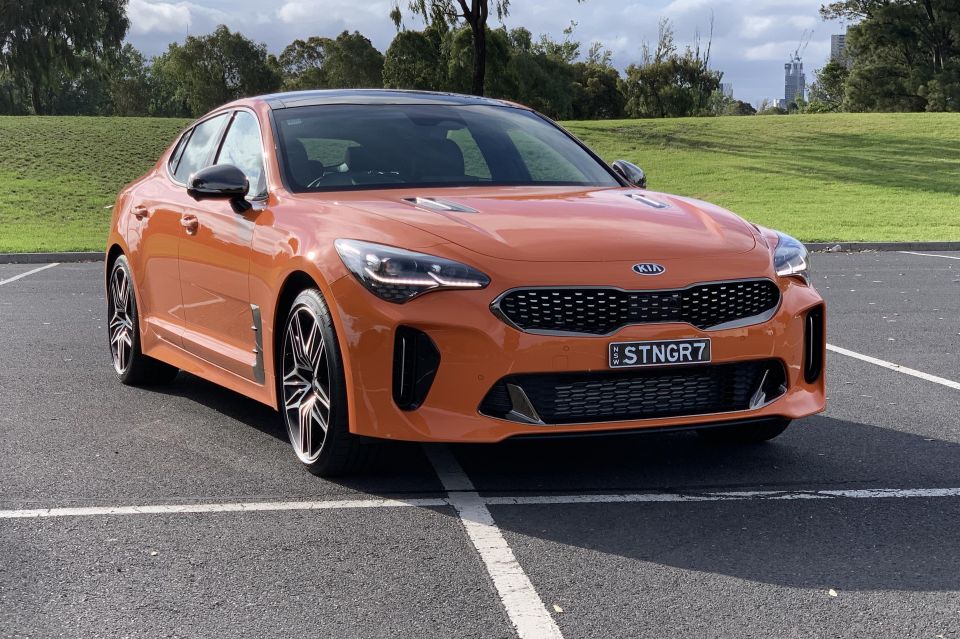
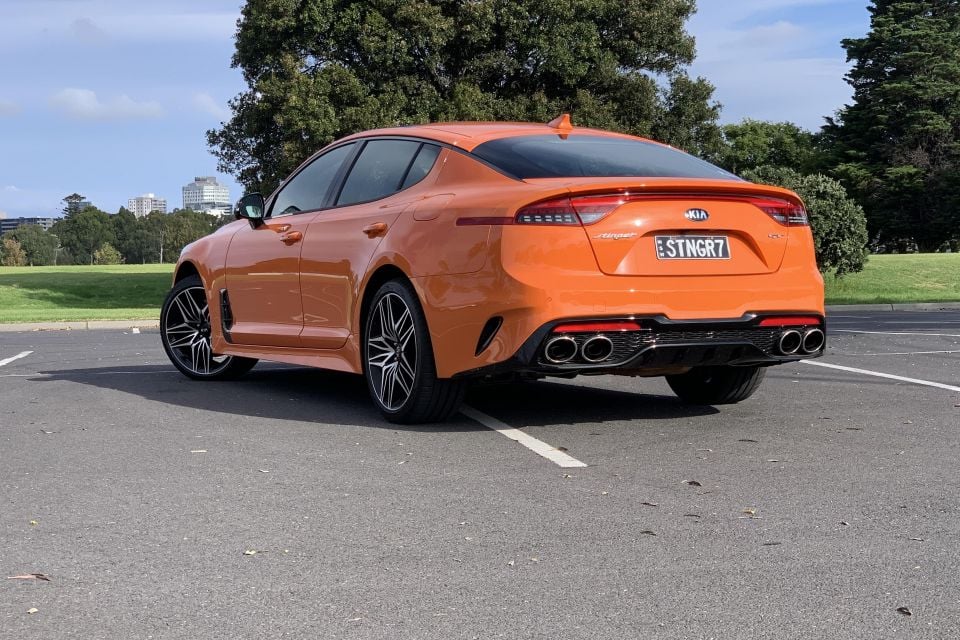

Contributor
New from
$63,260
excl. on-roads

Contributor
New from
$63,260
excl. on-roads


Contributor
New from
$63,260
excl. on-roads

Contributor
New from
$63,260
excl. on-roads
Quickly see how this car stacks up against its competition. Select any benchmark to see more details.
Where expert car reviews meet expert car buying – CarExpert gives you trusted advice, personalised service and real savings on your next new car.
The launch of the Kia Stinger GT in Australia was defined by comparisons with the Holden Commodore.
The similarities are easy to spot on paper, given the Kia is a big, powerful family hauler with rear-wheel drive, but the comparisons also missed the point of the Stinger.
Kia didn’t design the Stinger to be a rival to one of Australia’s best-loved cars. It was a statement of intent, proof the brand could do more than economical motoring on a budget. It’s a statement that has paved the way for the more upmarket new Sorento and the bolder, bigger Carnival.

The updated Kia Stinger GT has touched down in Australia, complete with some choice refinements – and with no more Commodore to steal its thunder and the Volkswagen Arteon on hiatus, it’s light on for rivals.
With a new look, a massaged interior, and a louder factory exhaust for the 3.3-litre twin-turbocharged V6, Kia has set out to refine what was already an impressive grand tourer.
It’s mostly managed to do just that.
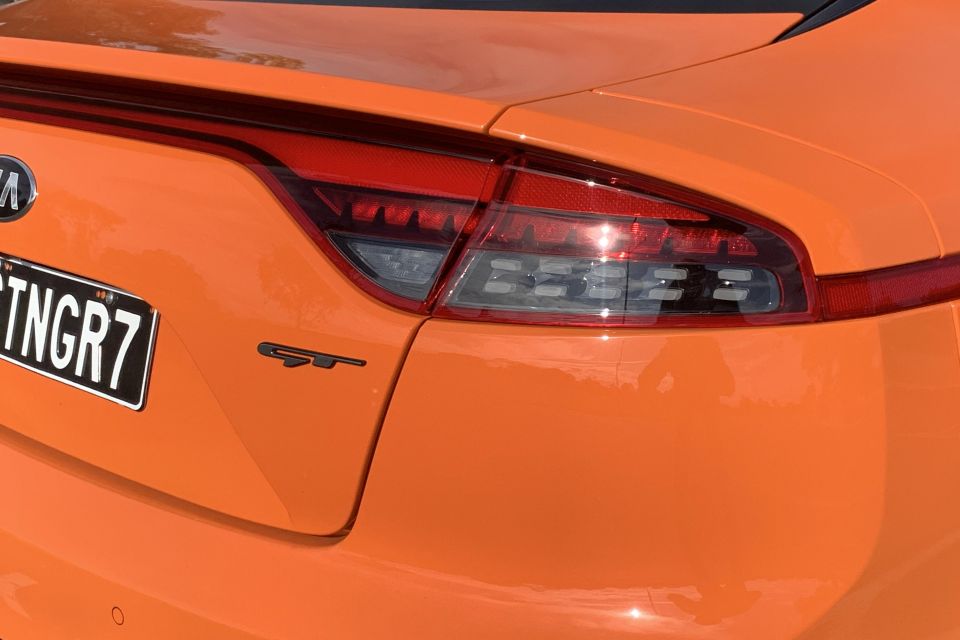
You can get into a four-cylinder Stinger for $53,090 drive-away, and the cheapest six-cylinder model is priced from $56,890 drive-away.
The range-topping GT on test here kicks off at $66,690 drive-away.
Pure rivals for the Stinger are hard to come by, given the Commodore SS is now dead and the Volkswagen Arteon is taking a break from the Australian market.
The Skoda Superb 206TSI Sportline kicks off at $60,390 but pack the same punch as the Stinger.
The equivalent Audi A5 Sportback doesn’t come close to matching the Stinger in a straight line, either, and has a starting price on the wrong side of $70,000 before on-road costs. BMW’s newest 4 Series Gran Coupe is yet to be revealed, too.
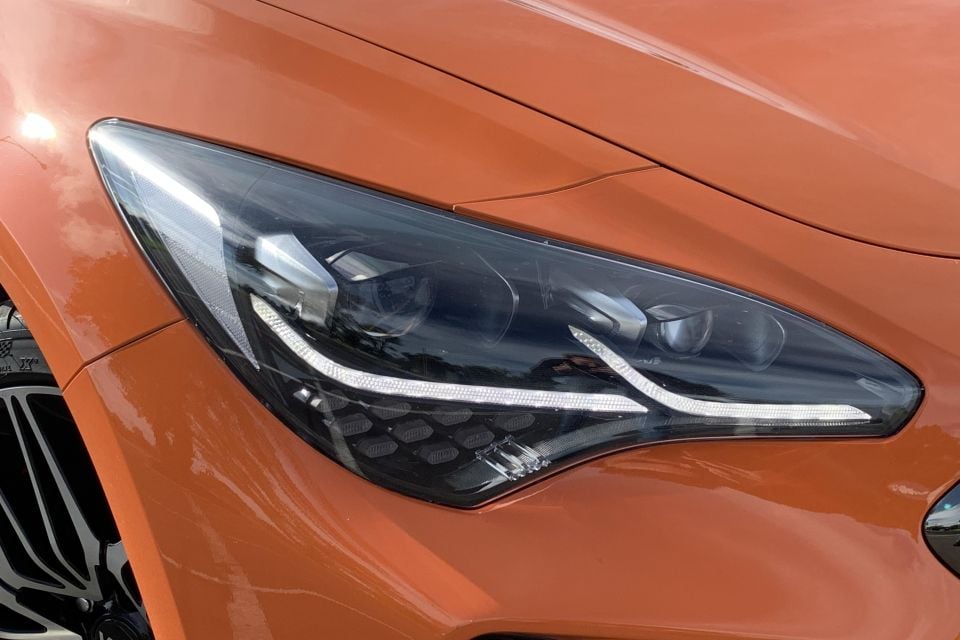
Buy your new car without the stress. It's fast, simple and completely free.

Great service from Travis and team, second time I have used this business would not hesitate to recommend them to anyone
Craig C.
Purchased a Ford Ranger in Sunshine Coast, QLD
CarExpert helped Craig save thousands on his Ford Ranger, now let us save you on your next new car.
Find a dealThe Stinger is a flagship car for Kia, and it’s equipped as such.
‘The whole rang benefits from a 10.25-inch touchscreen infotainment system with wired Apple CarPlay and Android Auto, along with satellite navigation and DAB radio as part of the 2021 update.
It’s a larger screen than previously offered, and sits in a sleeker new housing to boot.
There’s a reversing camera and rear parking sensors, adaptive cruise control, keyless entry and start, rain-sensing wipers, dual-zone climate control, and LED headlights as standard even on the entry-level 200S.
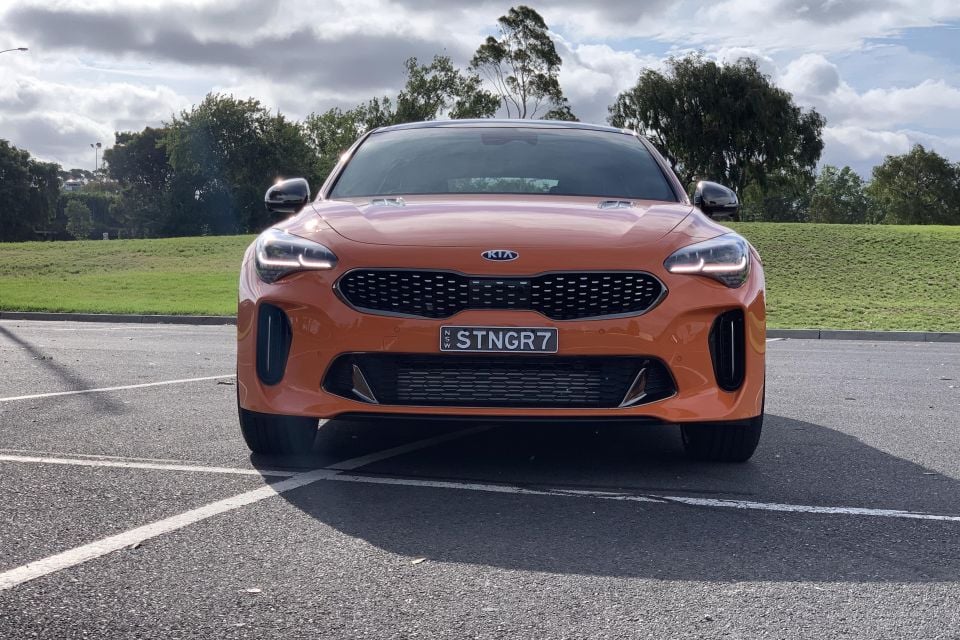
Moving up to the twin-turbo V6 330S gets you Brembo brakes, a mechanical limited-slip rear differential, and a bi-modal exhaust atop that base spec.
The range-topping GT adds front parking sensors, a surround-view camera, blind-spot assist, rear cross-traffic assist, safe exit warning, adaptive LED headlights with adaptive high-beam, Nappa leather seat trim, as well as heated and ventilated front seats.
There’s a panoramic sunroof, a flat-bottom heated steering wheel, a powered steering column, a head-up display, wireless phone charging, a 15-speaker Harman/Kardon sound system, suede headlining, a 7.0-inch trip computer display, and 19-inch alloy wheels.

The Stinger scored five stars when tested by ANCAP in 2017.
It scored 91 per cent for adult occupant protection, 81 per cent for child occupant protection, 78 per cent for pedestrian protection, and 70 per cent for safety assist.
The car’s autonomous emergency braking system has gained cyclist detection and junction assist for 2021, the latter of which will apply the brakes if you attempt to turn into oncoming traffic.
The lane-keep assist system now has road edge detection, while lane-following assist is also new – keeping the car centred in its lane on the highway.
The GT also gains blind-spot and rear cross-traffic assist, capable of applying the brakes if it detects an imminent collision. Kia has also added a blind-spot camera display in the instrument cluster, plus safe exit warning.
In terms of passive safety, there are front, front-side and curtain airbags plus a driver’s knee bag.
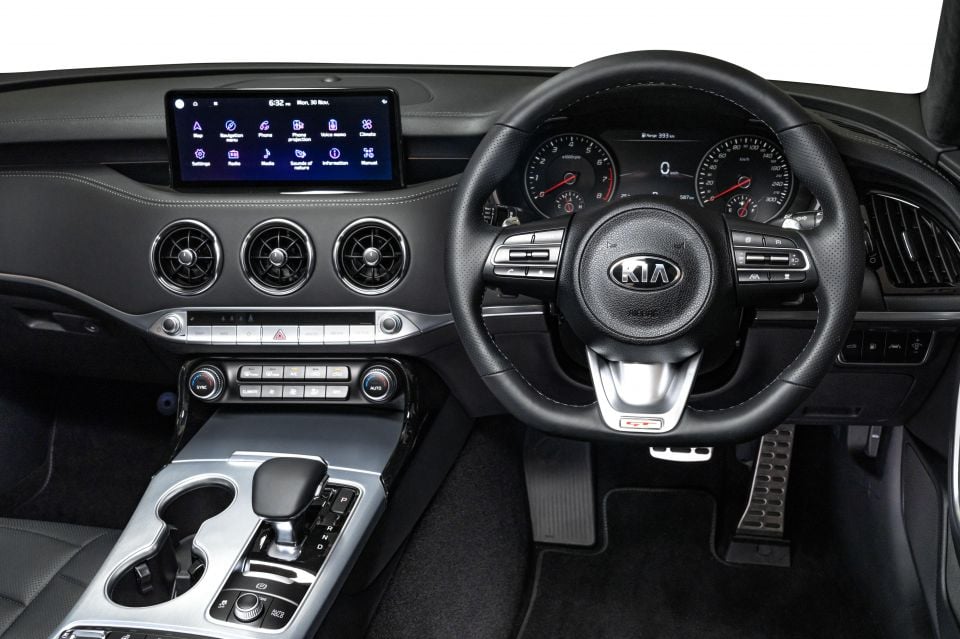
Kia has smoothed away the rough edges in the Stinger’s cabin for 2021, and improved its ambience in the process.
For starters, the chunky gloss black bezel is gone from the central screen, and the seats are now finished with a pattern that’s part six-pack, part quilted luxury throne. Whatever the inspiration, it’s distinctive.
The fundamentals in the Stinger are brilliant. The front seats drop low and are ideal for long-haul driving, with a well-judged mix of padding and bolstering, and the electrically-adjusted steering wheel telescopes right out to meet taller drivers.

All the major controls are within easy reach, and touches like the silver rocker switch for the heated/cooled seats feel a bit more special than a regular button. Ditto the trio of round air vents dominating the dashboard, which feel very Mercedes-Benz.
The new 10.25-inch infotainment system is pure Kia though, for better and for worse. On the plus side, it’s quick to respond and easy to navigate.
In the negatives column? It’s a bit of a stretch to reach, and the fact the primary function is on the left side of the display when it’s running in split screen suggests the system was developed for left-hand drive and not fully adapted for our market.
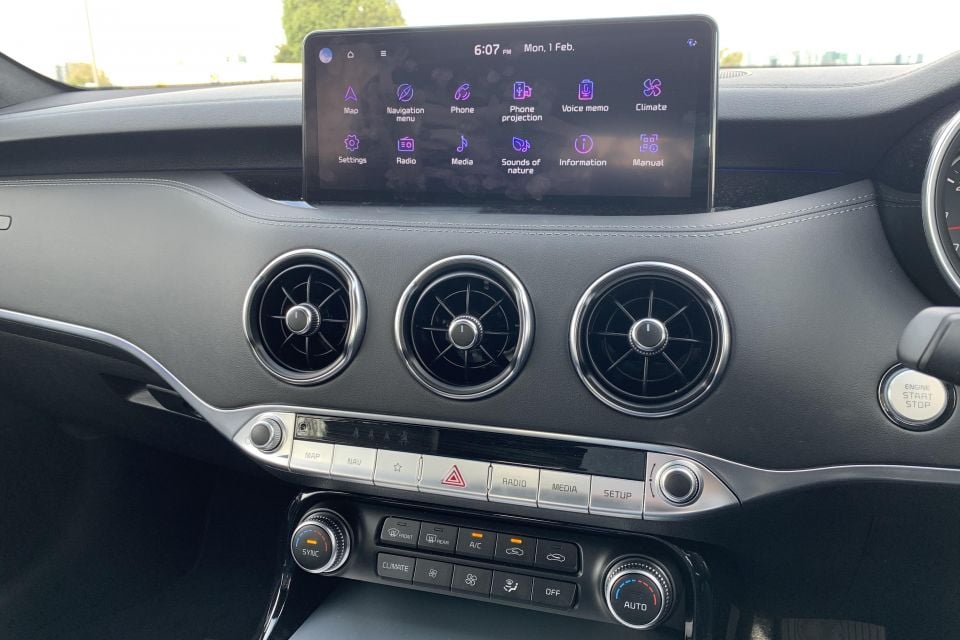
The 7.0-inch trip computer display between the clear, simple analogue dials is clear and easy to use on the move, and the blind-spot view camera is a handy addition.
Storage space is good, with a wireless phone charging pad under the dashboard, cupholders on the transmission tunnel, a shallow storage bin under the central armrest, and spacious door pockets.
It all feels well put together, too. The leather on our tester was smooth and supple, and all the buttons clicked and clacked like you’d expect of a $65,000 car.
There was a slight creak from the sunroof though. The issue isn’t reserved for the Stinger, but that doesn’t mean it isn’t annoying.
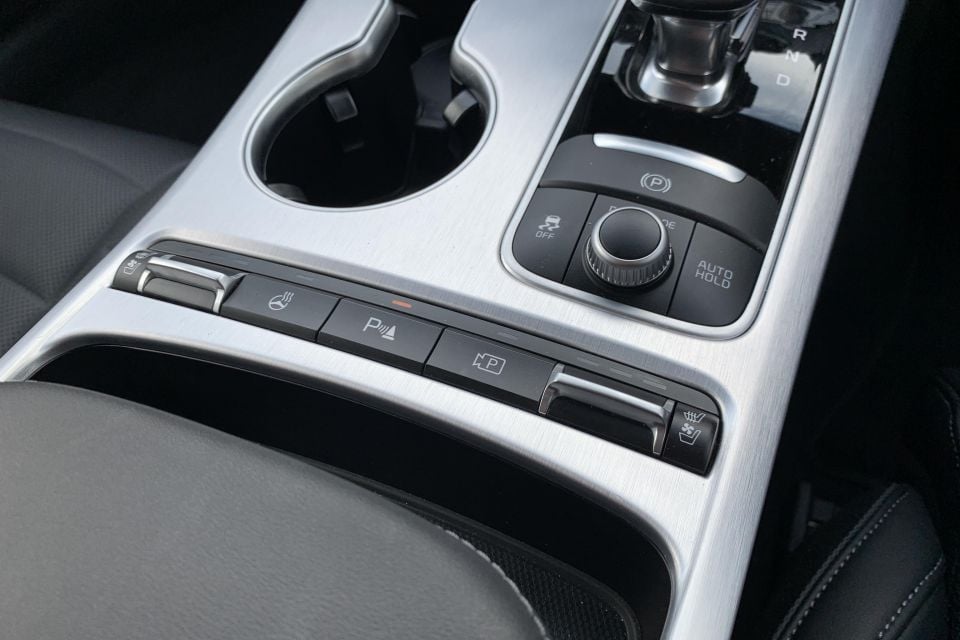
Things aren’t so rosy in the rear, where the sloping roofline cuts hard into headroom for taller passengers, and the pronounced transmission tunnel makes the central seat a short-trip-only proposition.
Legroom is acceptable though, and the presence of air vents and a USB charger will keep kids happy back there.
Boot space under that massive, powered liftback is 406L with the rear seats in place, and 1114L with them folded.
Although neither number is ground-breaking on paper the load bay is broad and flat, and the liftback shape is far more practical than a conventional sedan if you’re carrying bikes or other bulky objects.
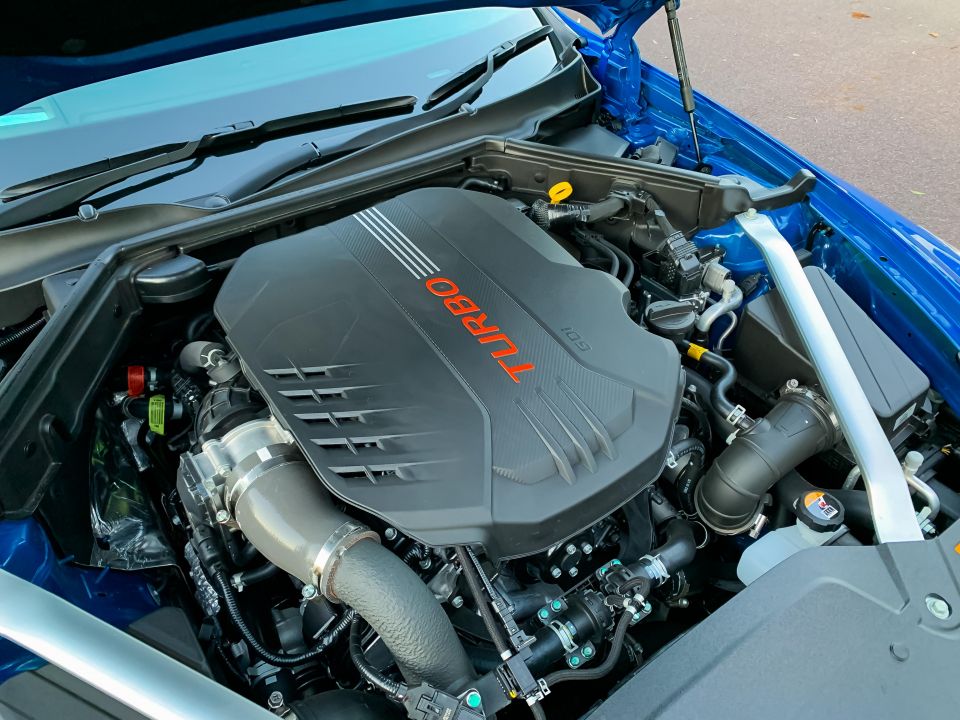
Power in the Kia Stinger 330S comes from a twin-turbocharged 3.3-litre petrol V6 engine.
It’s hooked up to an eight-speed automatic transmission and rear-wheel drive.
With 274kW of power and 510Nm of torque, it sprints to 100km/h in just 4.9 seconds and flat out you’ll be doing 270km/h.
Claimed fuel economy is 10.2L/100km on the combined cycle, we saw 10.9L/100km on a week with a mix of city and highway driving.
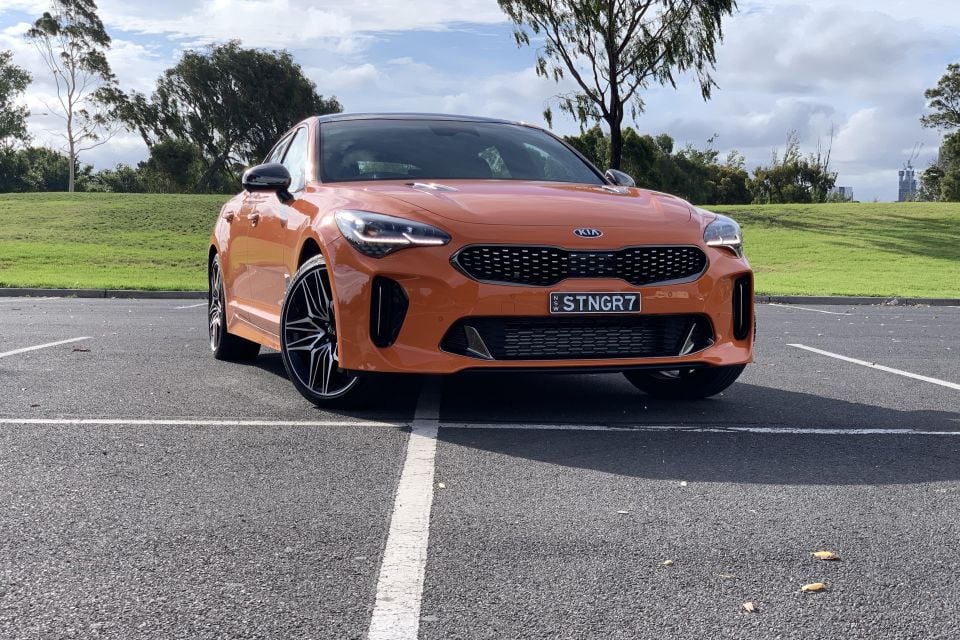
It’s still fast, folks.
The twin-turbocharged V6 in the Stinger GT is still a tower of power, pulling hard from almost any speed.
On paper it’s a five-second car to 100km/h, but it feels faster than that in the real world.
There’s just a hint of turbo lag when you lean on the accelerator from standstill, but once the turbochargers are spinning – call it 2100 or 2200rpm – the Stinger packs a mid-range punch nothing at its price can match.
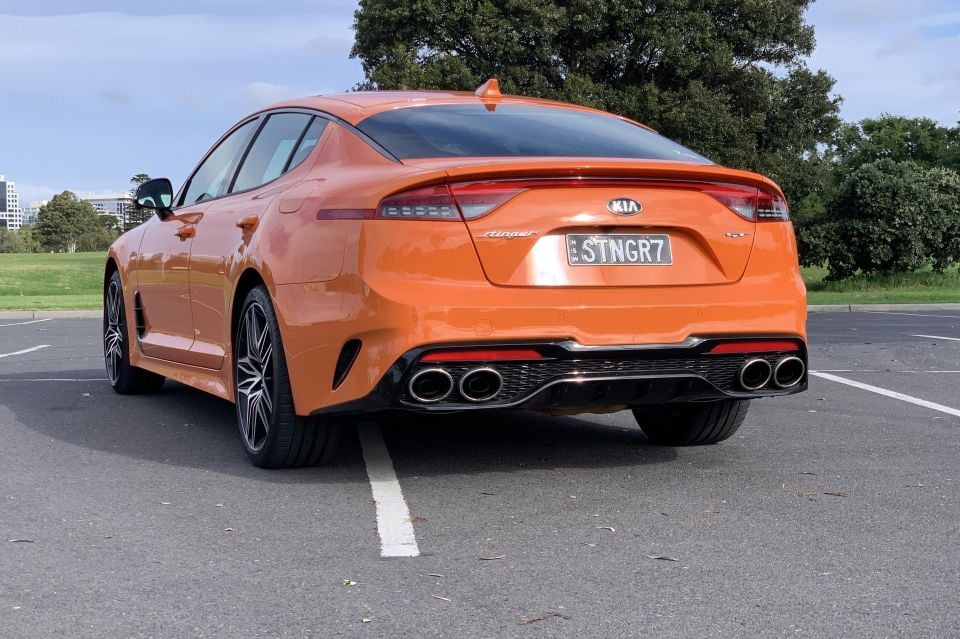
New for 2021 is a factory bi-modal exhaust designed to help the engine, which has previously been criticised for being a bit dull, find its voice.
It hasn’t really worked, unfortunately. There’s more noise when you accelerate hard in Sport, but it’s always a fairly anonymous V6 blare rather than a sonorous, sporty sound.
Kia needs to steal some of Alfa Romeo’s sound engineers to learn how they managed to make V6 engines sound so good, because it’s the only real knock on the Stinger’s engine.
As you’d expect of a heavy car with a luxury skew, the Stinger doesn’t feel like a pure sports car, but it has a rear-drive balance that’ll instantly endear it to the Commodore SS set.
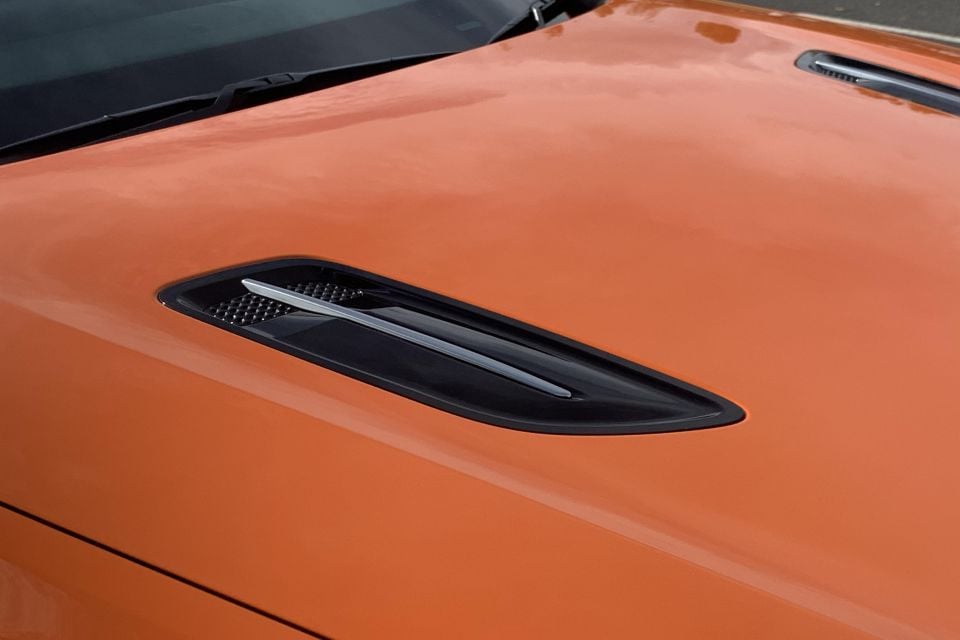
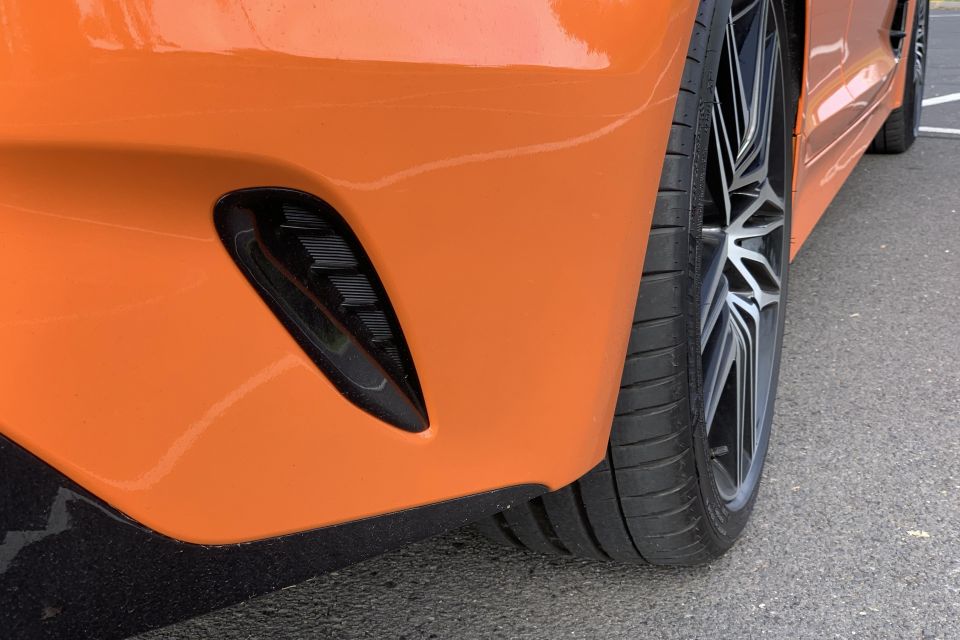

Where expert car reviews meet expert car buying – CarExpert gives you trusted advice, personalised service and real savings on your next new car.
The steering is quick and the front end is loyal which, combined with the grippy Michelin tyres, means you can flick the Stinger into corners with more intent than maybe you’d expect.
There’s no escaping its size though, and the traction control gets involved quickly if you ask too much of the rear tyres.
Flicking into Sport tightens up the ride, makes the seat bolsters grip you a little tighter, and adds some weight to the steering, but it doesn’t ever make the Stinger lighter.
Where the big Kia does its best work is on the open road, where it’s an excellent grand tourer.
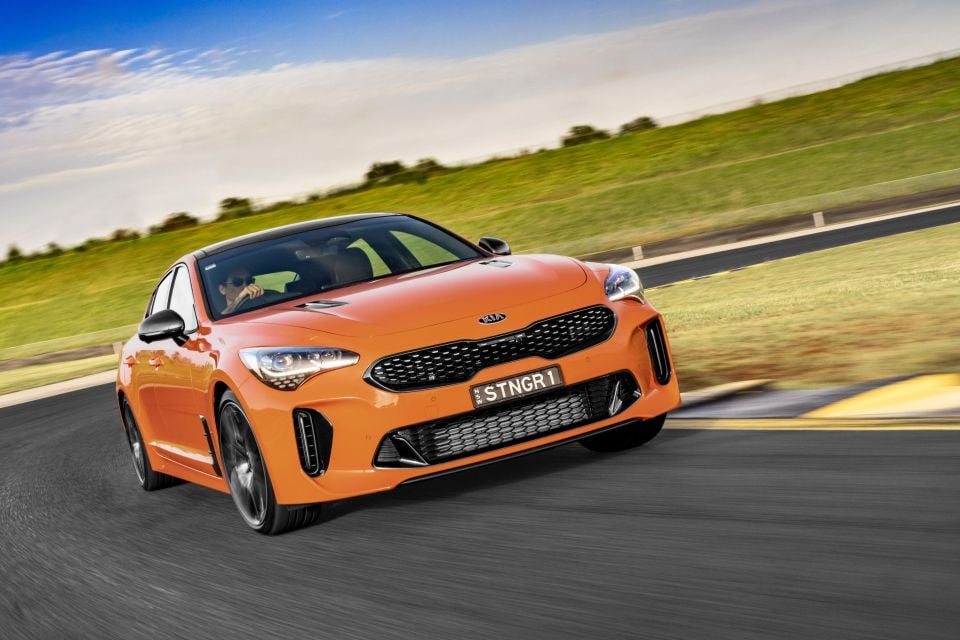
The ride is superbly judged in Comfort, allowing the Stinger to soak up the worst our roads have to offer without ever feeling floaty, and the endless punch on offer from the twin-turbo V6 engine makes overtaking an absolute breeze.
Kia’s lane-centring is still far too aggressive for my tastes, but the adaptive cruise control is decisive and lane-keeping assist does a good job accounting for any dozy drifting.
Even the ride is at its best on the highway. It can occasionally feel a bit taut in the city, making for a bit much head-wobbling over smaller lumps and bumps, but it settles down as the speed rises.
There’s almost no wind or road noise from behind the wheel, and the standard sound system packs more than enough punch to drown out the world around you.
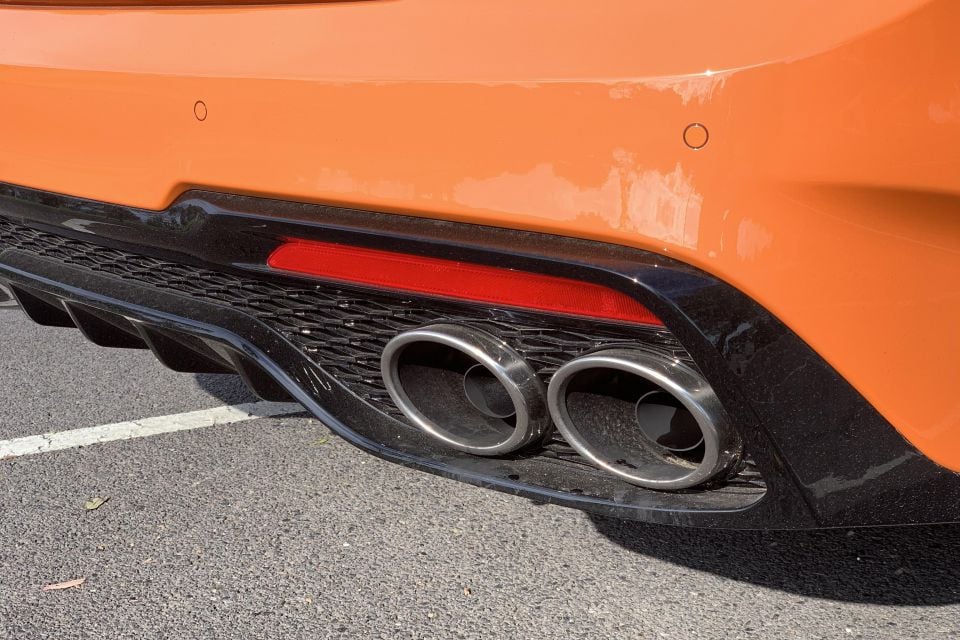
Like the wider Kia range, the Stinger is backed by a seven-year, unlimited-kilometre warranty and seven years of roadside assist.
Maintenance is required every 12 months or 10,000km.
The first five services cost $350, $537, $487, $792, and $394 respectively under Kia’s capped-price service plan, for an average service cost of $512.
The 2021 Stinger GT excels where it has always has. It’s still a brilliant highway cruiser, with a large boot and a comfortable cabin.
The updates for 2021 are all welcome. The interior tweaks are worthwhile, the new exhaust frees up a bit more noise, and the new look hasn’t ruined what was already a distinctive presence on the road.
Kia’s flagship is still one of the best grand tourers out there.

Click the images for the full gallery
Where expert car reviews meet expert car buying – CarExpert gives you trusted advice, personalised service and real savings on your next new car.
Scott Collie is an automotive journalist based in Melbourne, Australia. Scott studied journalism at RMIT University and, after a lifelong obsession with everything automotive, started covering the car industry shortly afterwards. He has a passion for travel, and is an avid Melbourne Demons supporter.


William Stopford
1 Hour Ago


Max Davies
2 Hours Ago


Derek Fung
3 Hours Ago
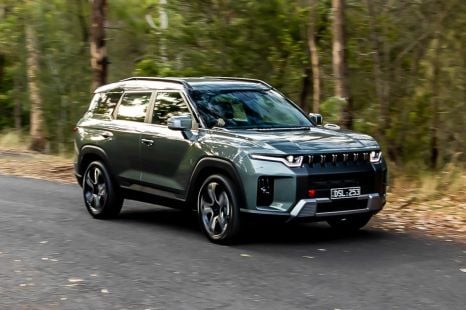

Matt Campbell
9 Hours Ago


Ben Zachariah
1 Day Ago


Damion Smy
1 Day Ago